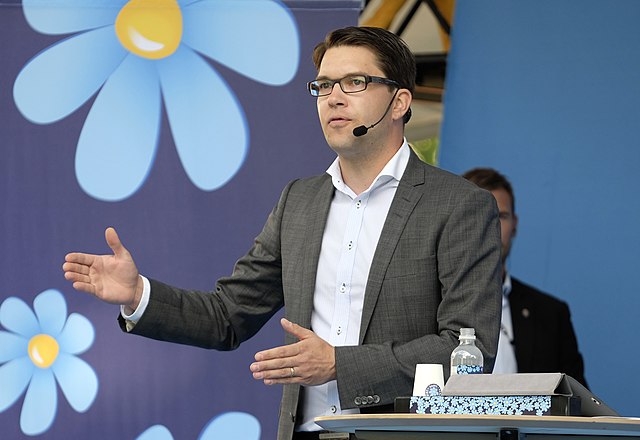Right-Wing Populism and Pasokification

In September 2022, a coalition of right-wing parties won the general election in Sweden, with the Social Democrats, Greens, and other ‘left bloc’ parties losing their parliamentary majority to the national populist Sweden Democrats and the ‘right bloc.’ However, until relatively recently, Sweden was considered one of a handful of countries that could withstand a national populist movement. The rise across Europe of populist parties, primarily on the nationalist right but also on the socialist left, has become a major contemporary phenomenon. It has coincided with the process of Pasokification – that is, the decline of traditionally dominant, center-left parties, exemplified by Greece’s Panhellenic Socialist Movement (PASOK). PASOK went from being the biggest leftwing party since the 1980s to receiving a putrid 4.7 per cent of the vote in the January 2015 election. But what is the cause of Pasokification and the rise of populism? Is there anything these center-left parties can do to recover their former strength?

One possibility: cultural backlash
The debate on the rise of populism is a contentious one in academia. One theory, propounded most famously by political scientists Ronald Inglehart and Pippa Norris, argues that populist movements are driven predominantly by “cultural backlash.” This backlash is driven by older, conservative voters in response to an increasingly liberal and secular, or what can be called a “post-material” and progressive, society. Such a society has undergone the processes of urbanization, immigration, and widespread post-secondary education. This leads to a “value change and generational replacement,” as the sections of society that used to be dominant and successful begin to feel worse off or in danger of becoming a minority in this increasingly liberal society.
Criticisms of the cultural backlash explanation
The cultural backlash thesis has been criticized for a variety of reasons. For one, scholars such as Matthew Goodwin argue that it mistakes populism as an ephemeral force in modern politics. Goodwin points out that national populism did not exist in 2016 but has its origins in the 1970s and 1980s and has grown over time. Moreover, the explanation has been criticized for its oversimplification and sometimes erroneous understanding of today’s transformed political demography.
Many populist parties draw more support from younger, not older, voters. The Sweden Democrats polled worse for voters aged 65 and older than those aged 50-64 in 2021, for instance, and in the 2022 election, the Sweden Democrats won 22 per cent of the 18-21 demographic compared to 20 per cent of 65+ voters. National populists routinely gain most of their support from the lower-middle and working classes. In the election, the Sweden Democrats received the second highest number of votes among manual workers, at 29 per cent, and this was their highest rate among any voting bloc. They also received the second highest number of votes from farmers and entrepreneurs, at 24 per cent, right behind the Moderates at 25 per cent and above the Social Democrats at 19 per cent. Moreover, education polarization has been a major cause of voting realignment, with more educated voters preferring socially liberal and multicultural parties and less educated voters more likely to prefer populist ones. In Sweden, support for the Green, Left, Liberal, Centre, and Moderate parties is higher among those with post-secondary education than those without post-secondary education, while the opposite is true for the Sweden Democrats. In other words, the rise of populism is based on more fundamental and persisting social cleavages produced from economic and cultural grievances rather than a temporal shift in values and culture more broadly.
What can be done?
Nevertheless, the cultural backlash is indispensable in explaining populism, especially considering its strong correlation to concerns over high levels of immigration and national sovereignty. Goodwin himself confirms that concern over immigration is the strongest predictor that someone will vote for a populist party. And in Sweden, more generally, dissatisfaction with immigration has increased since the refugee crisis in 2015, with the percentage of the population wanting fewer refugees rising from roughly 40 per cent to 55 per cent from 2015 to 2017 alone. The percentage of “overtly negative” attitudes towards refugees rose from approximately 33 to 40 per cent over the same period. Yet, when answering the question of what moderate, center-left, and liberal parties can do to reverse their decline, a more nuanced approach is needed.
Goodwin distinguishes between numerous types of options, such as changing the party’s platforms to be more in line with a populist voting bloc, refusing to budge on essential issues and standing firm on “principle,” and engaging with voters on a personal level so that distrust of mainstream parties is lessened. Each option may be best for a specific party at a different time. For instance, the Danish Social Democrats tried to adopt more nationalist stances on immigration in response to the rise of the national populist Danish People’s Party. It initially failed before the 2010s, but eventually, the decision to move ‘left on economics, right on immigration’ helped propel them and the left bloc to victory in 2019. Conversely, consider the 2019 general election in the United Kingdom. The Labour Party, under Jeremy Corbyn’s staunchly left-wing leadership, had one of its worst elections despite “facing an incumbent Conservative Party that had presided over austerity, a prolonged economic squeeze and a divisive national debate over Brexit.” Standing firm on principle may not be the best option, particularly when the center-left party in question is facing a political realignment that runs deeper than momentary political controversies.

Final thoughts
For better or worse, national populism is here to stay, and the effects of Pasokification may not be fully reversible. But, as seen in the aforementioned examples, center-left parties do have some control over their own fate. These parties need to do some soul-searching and redefine or strongly reaffirm their priorities to reconnect with voters if they want to survive in a populist world. What exactly that requires will depend on the situation; regardless, there seems to be a conflict between the current orientation that many center-left parties have adopted and the increasing number of culturally exclusive and populist voting blocs.
Featured image: “Jimme Åkesson Almedalsveckan 2014 001” by Johan Wessman, licensed under CC BY-SA 2.0
Edited by Avni Aghi
